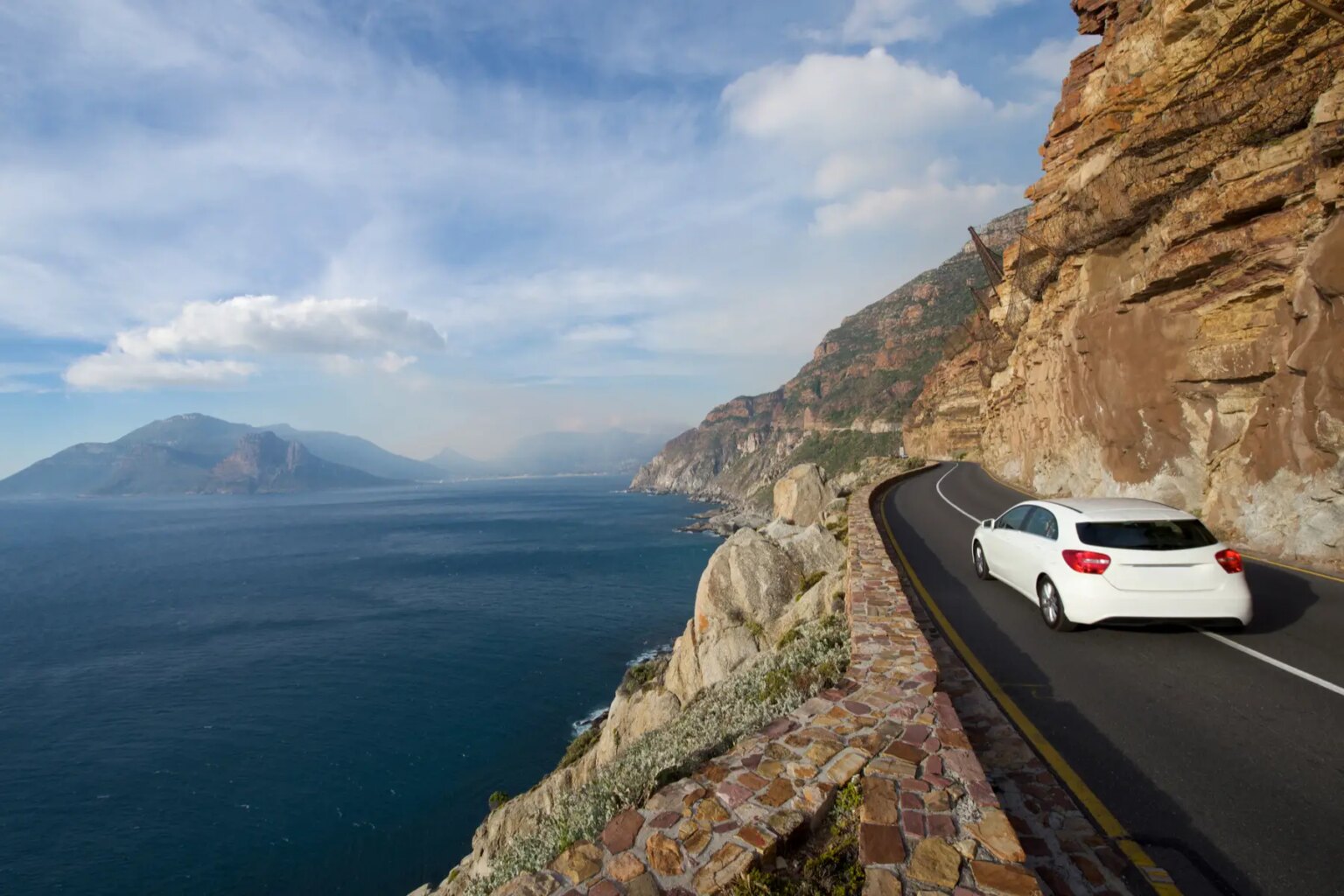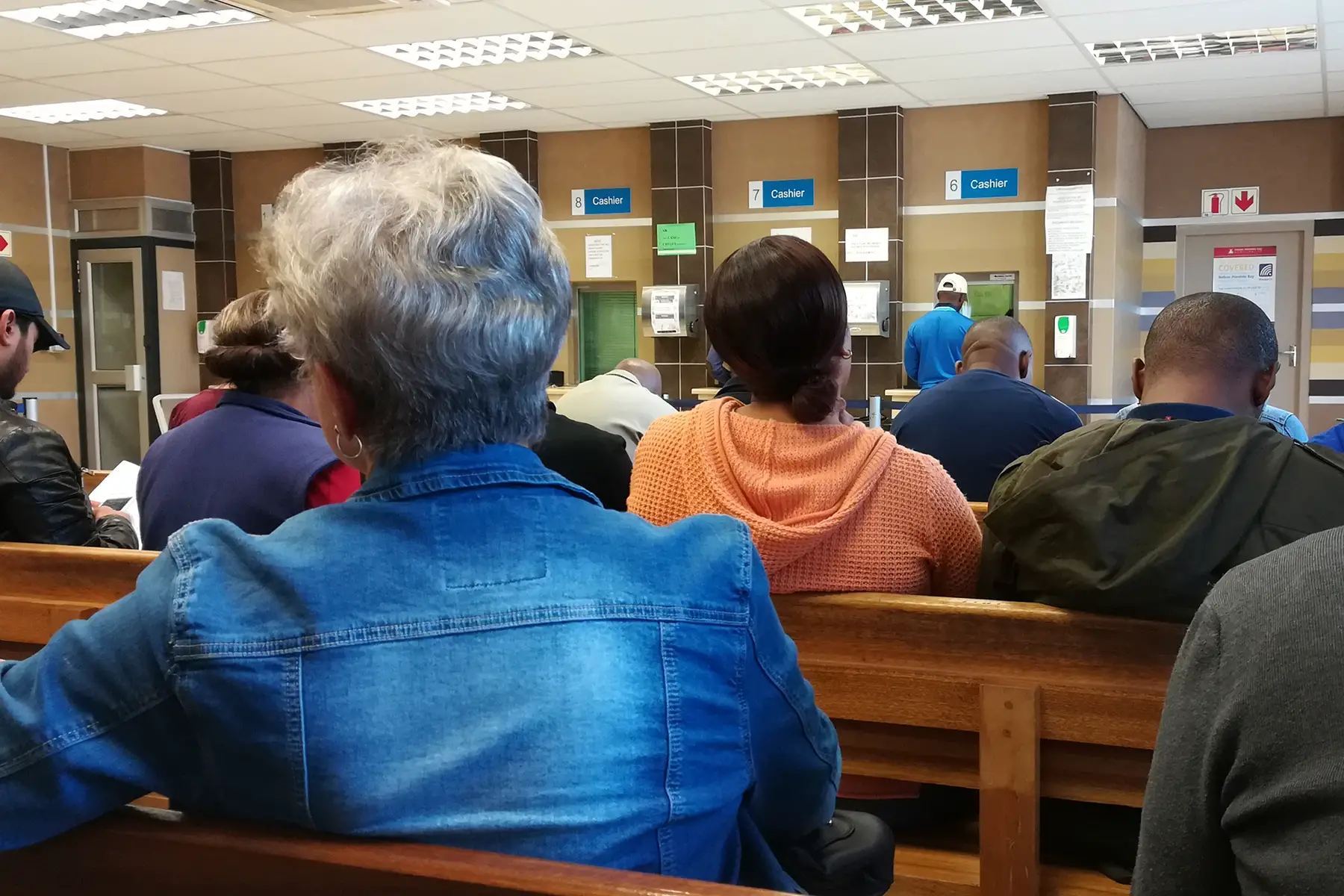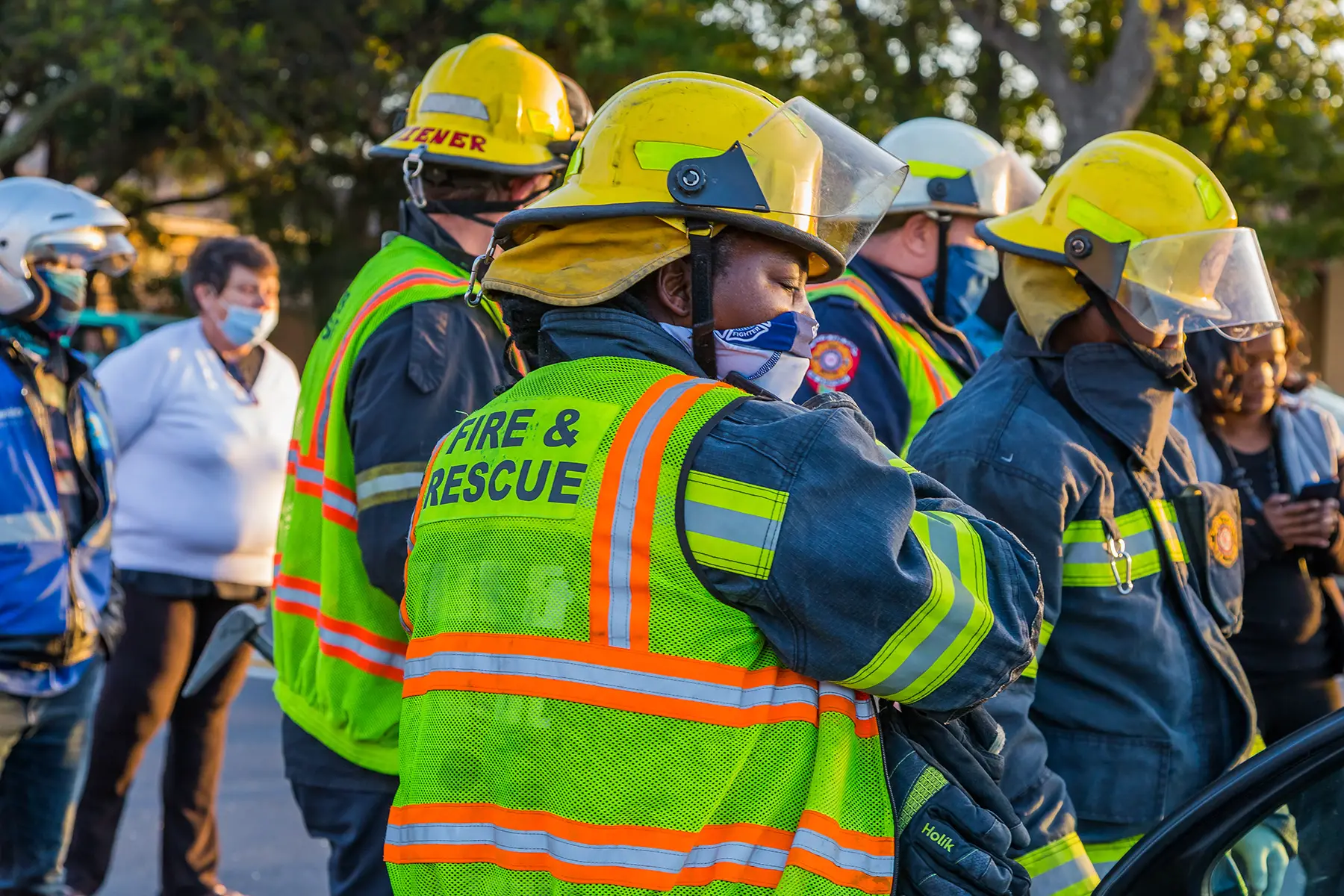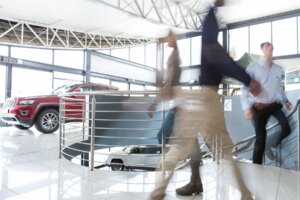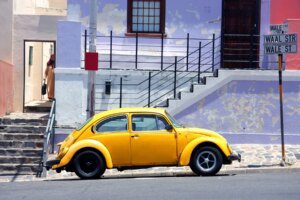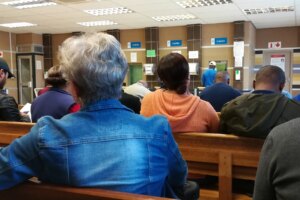When relocating to a new country, one of your first considerations will be how to get around independently. Of course, with its vast distances and extensive road network, South Africa is primarily a driving country. Therefore, most people choose to travel by car instead of using public transport, such as buses or trains. That said, taxis are the most commonly used form of public transport, with more than 200,000 on the country’s roads.
Whether you are driving to work, doing the school run, or taking a road trip to explore the beautiful country, there are some essential things you need to know before getting behind the wheel. For example, how do you get your driver’s license or buy a car? And what should you do if you have an accident or breakdown? To help you get on the road, this article provides an overview of the following:
- Driving in South Africa
- Who can drive in South Africa?
- South African driving licenses
- Drivers with disabilities in South Africa
- Car registration and maintenance
- Driving costs in South Africa
- Driving rules and penalties in South Africa
- Road signs in South Africa
- Traffic information in South Africa
- Parking in South Africa
- Road accidents and breakdowns
- Cars in South Africa
- Car repair in South Africa
- Tips on driving in South Africa
- Useful resources
Rentalcars
Ready to explore South Africa with the whole family? Explore this beautiful country with Rentalcars.com. Rentalcars.com is an international rental portal that takes the hassle out of hiring a car. Get connected with local rental agencies in over 160 countries worldwide and rent in confidence with Rentalcars.com.
Driving in South Africa
The Department of Transport (DoT) is responsible for the driving legislature in South Africa, and its Road Traffic Management Corporation (RTMC) belongs to the United Nations Road Safety Collaboration. Meanwhile, the South African National Roads Agency (SANRAL) maintains the road networks.
South Africa is a relatively large country that covers around 1.2 million square kilometers and has one of the largest road networks in the world. As a result, driving is the most common form of commuting, and around a third of South African households own cars. That said, most of the population relies on informal public transport, or more specifically, taxis. In fact, about 10.7 million people travel by taxi, compared to 6.2 million who self-drive. Of course, the government hopes to better regulate the taxi industry to make it safer for all.
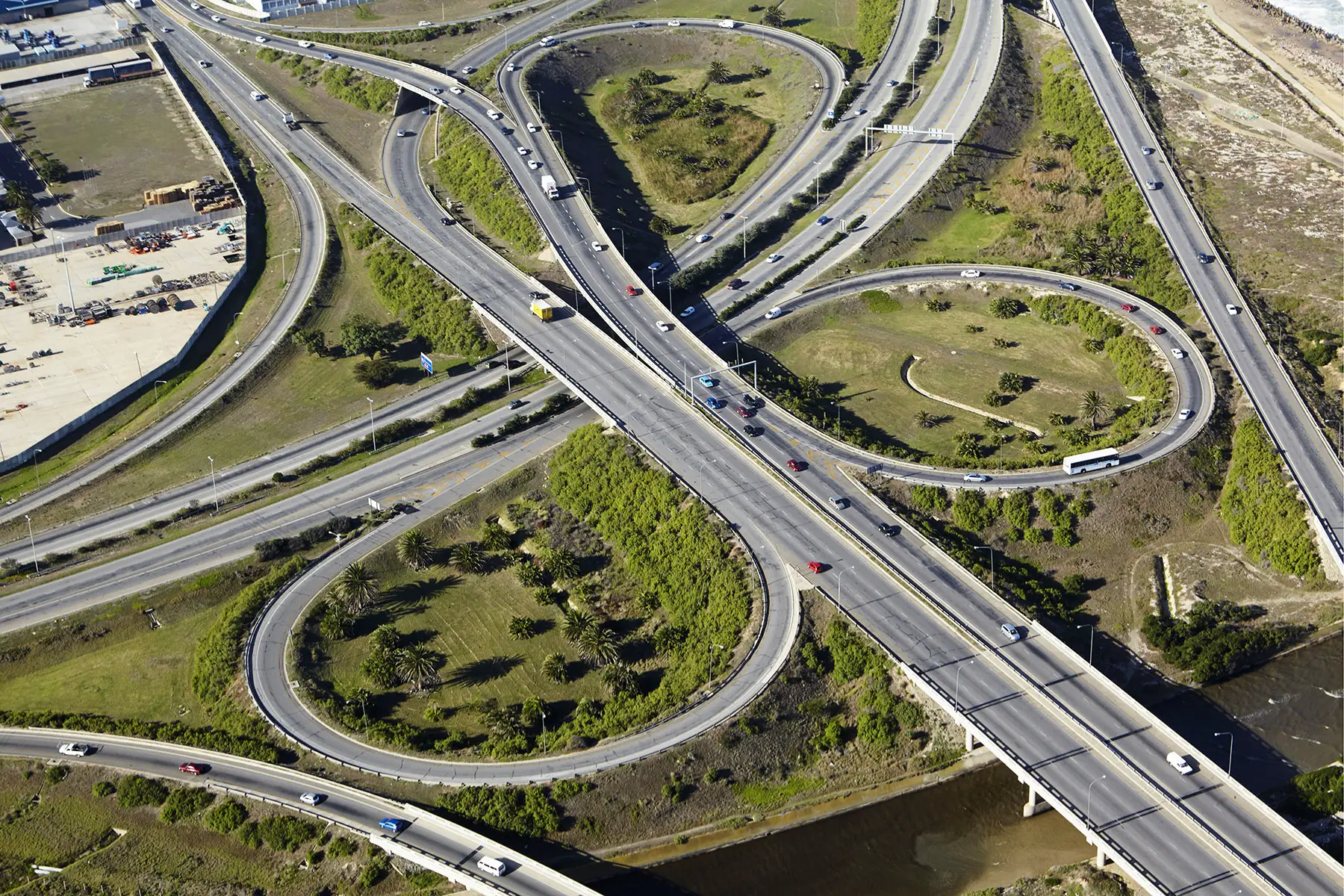
Transport contributes 10.8% of the country’s total greenhouse gas (GHG) emissions. Unfortunately, cars contribute 91.2% of these emissions as fewer than 7,000 vehicles – out of more than 12 million in South Africa – are emission-free. Furthermore, despite the high ratio of public EV chargers to EVs on the road in 2020, the usage of hybrid and electric vehicles (EVs) is still lagging due to a lack of awareness and affordability. As a result, the government launched its Green Transport Strategy in 2018 to reduce GHG emissions.
In contrast to the Americas and Europe, in South Africa, drivers sit on the right-hand side and keep to the left. Generally, they are courteous and rule-abiding. However, unfortunately, speeding, road rage, vehicle crime, and driving under the influence still occur. Consequently, data from the World Health Organization (WHO) shows that sub-Saharan Africa has a high number of road deaths every year.
To address these issues, the South African government initiated the National Road Safety Strategy (2016 to 2030) which aims to halve road deaths by 2030. In February 2022, the RTMC also proposed to reduce speed limits to 110km/h and 50km/h, respectively. The current speed limits are 120km/h on major roads and 60km/h in urban areas.
Who can drive in South Africa?
Anyone who is aged 18 and older and has a valid driver’s license can drive in South Africa. International residents and tourists with valid foreign licenses may also drive in the country. However, if the license isn’t in English, you will need an International Driving Permit (IDP) and carry it along with your foreign license. When you become a permanent South African resident, you must also convert your foreign driver’s license within a year.
South African driving licenses
The Road Traffic Management Corporation (RTMC) issues learner and driver’s licenses through nationwide Driving License Testing Centres (DLTCs) in South Africa. The driver’s license, which is a polycarbonate card that is the size of a bank card, aligns with international standards. The front shows your picture, signature, personal information, and the card’s validity dates. The back includes a barcoded serial number, a QR code, and a ghost image. It also stipulates any driver or vehicle restrictions. The card is valid for five years. However, there is a proposal to change it to 10 years to align with international standards and address the current renewal backlog due to critical system errors. It is unclear if and when this change will come into effect, but it won’t be before 2023. You can renew your license online or in-person at a DLTC.
Getting a driving license in South Africa
You can sit the written test for a learner’s license (K53 Learners) at the age of 17 in South Africa. This covers road rules, signs, markings, traffic signals, and vehicle controls. If you pass, you will receive a learner’s license, which allows you to drive under the supervision of a licensed driver.
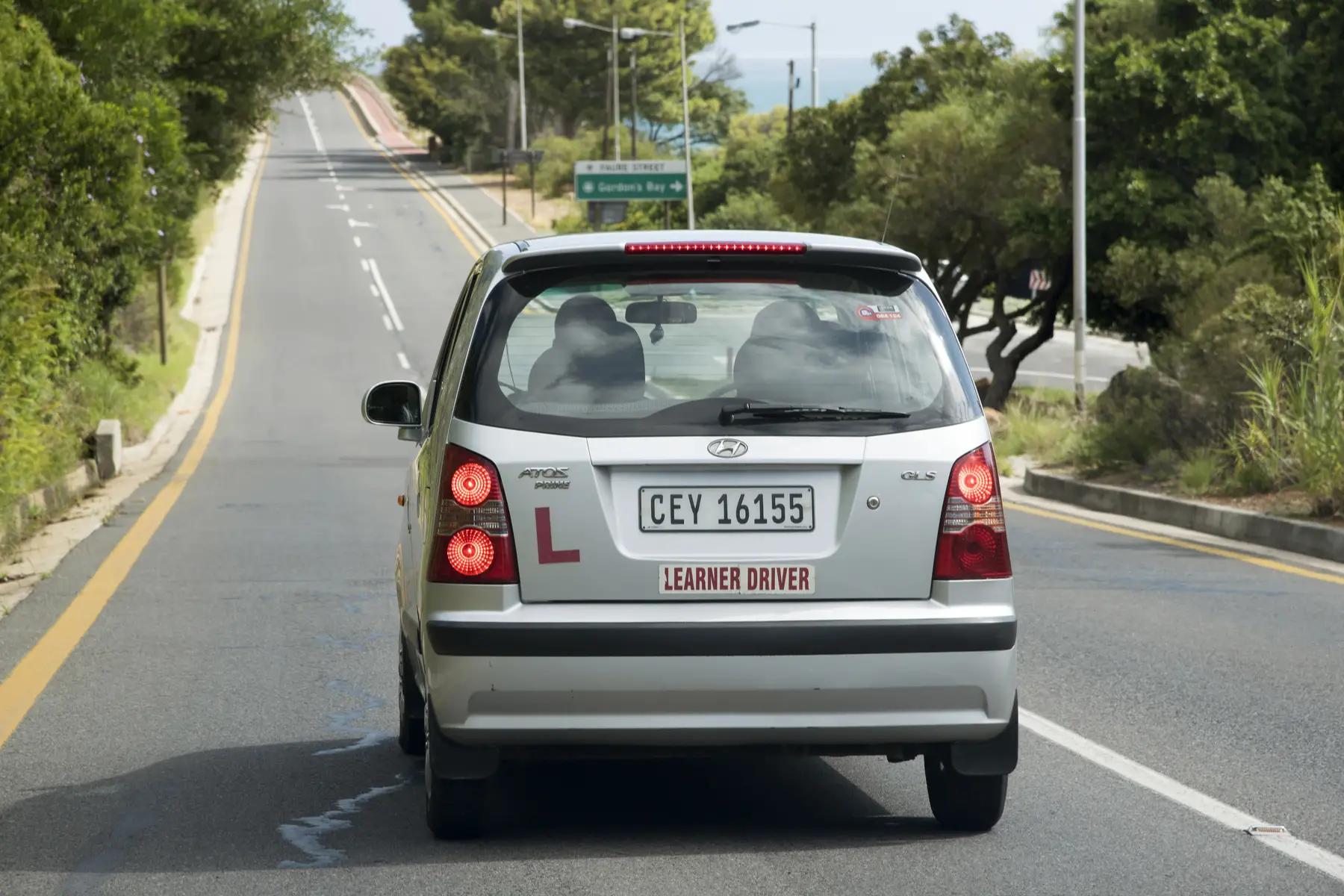
After your 18th birthday, you can take a practical driving test. You can book a test appointment at your local DLTC office or online and you will need to present the following documents:
- Completed application form (DL1)
- Application fee (differs between provinces)
- Passport (original and copy)
- Learner’s license (original and copy)
- Traffic Register Number (TRN)
- ID photos
- Proof of address
The driver’s license test consists of a yard and a road test. In the yard, which is located at the testing center, you will need to do a vehicle inspection, perform different parking maneuvers, reverse, and take off on an incline. Meanwhile, the road test section measures your ability to drive safely in traffic and adhere to all the road rules. Once you pass the practical driving test, you will get your South African driver’s license.
Exchanging a foreign driving license in South Africa
Once you have been a permanent resident for a year, you must exchange your foreign driving permit for a local one. You need to do this in the same province that your permanent residence was granted. However, this doesn’t apply to citizens of the Southern African Development Community (SADC) member states.
To exchange your foreign license, you will need the following documents:
- Your passport or identification and certified copies
- Photos
- Your foreign driving license (and possibly a letter of translation, if not in English)
- Proof of permanent residence
- The card fee
You will also need to surrender your foreign driver’s license after this process.
Drivers with disabilities in South Africa
Chapter 4 of the Road Traffic Act covers the legal aspects of driving with a disability in South Africa. Note that anyone of legal driving age with a degenerative disease or neurological condition must first undergo an assessment before they can apply for a driving license.
Once approved, first-time drivers will need to take their learner’s test and find a driving school with adapted vehicles to take lessons for their full driving permit. Drivers who already had a license when they became disabled will need to retake the driving test for adapted vehicles. Chauffeurs who transport people with disabilities also need to have the same professional driving permit (PrDP) as anyone wanting to transport passengers for an income in South Africa.
In places like shopping centers, wheelchair parking bays are located near the entrance. Notably, drivers need a wheelchair parking permit to use these.
For more assistance, visit:
- Auto-Mobility − an info hub for people with disabilities who want to drive
- The QuadPara Association of South Africa (QASA) – an association offering services and programs to help people with quadriplegia in their daily lives
- Rolling Rehab – a consultancy offering driver-ability and vehicle-adaptation assessments
- The National Council of and for Persons with Disabilities (NCPD) − the country’s leading disability organization
- DiSA – a disability information portal for South Africa
Car registration and maintenance
Every vehicle in South Africa must be registered annually and show an up-to-date license disc on the front window. You can go to your nearest motor vehicle registration authority to register a car and complete the Registration and Licensing of Motor Vehicle (RLV) form. You can also apply online, but the cost is higher.
In addition to the fee, you will need to present the following:
- Proof of address
- Your identification document
- Vehicle details on a manufacturer’s certificate (for new cars)
Once your vehicle has been registered, you will receive the certificate and vehicle license disc.
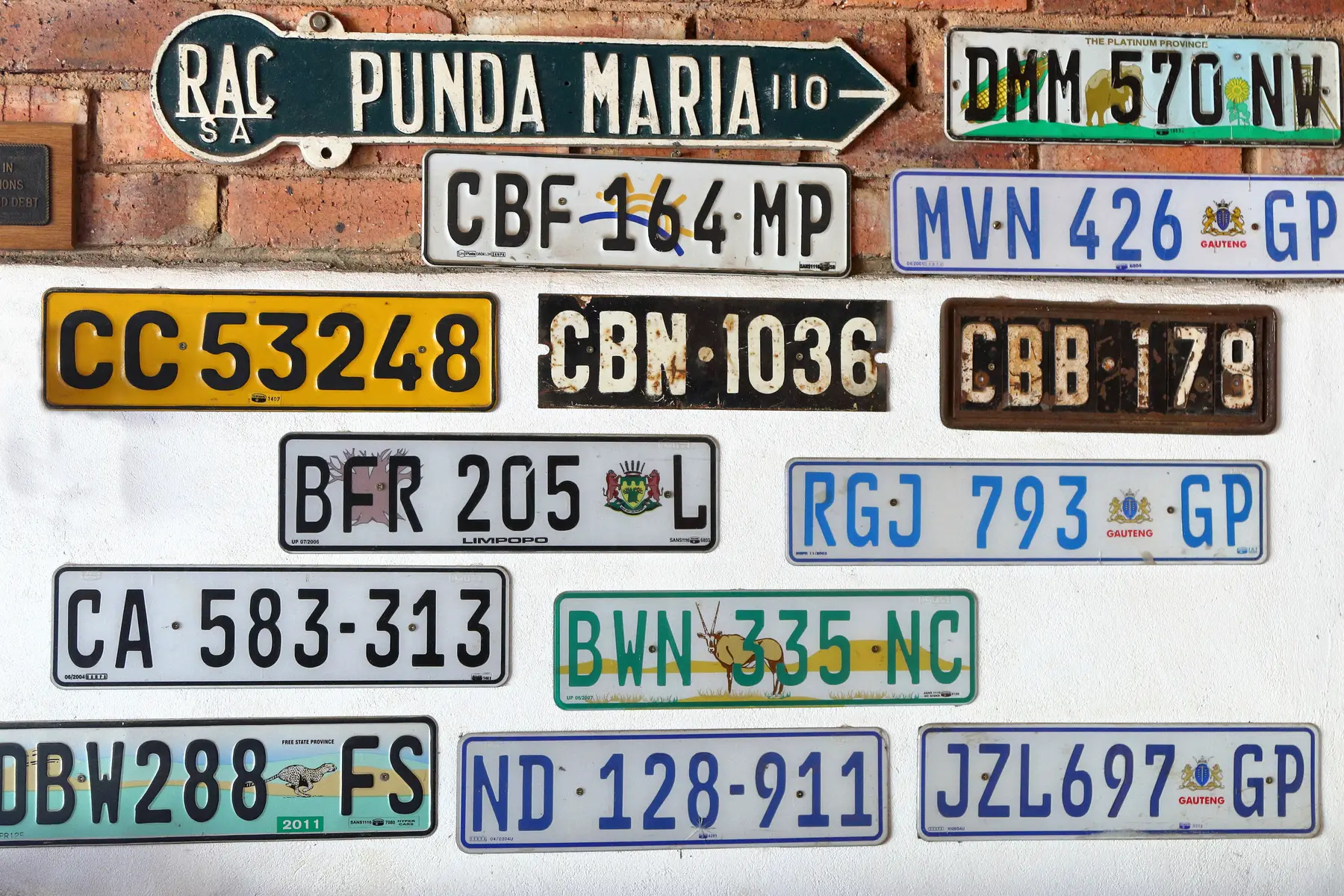
In addition, your car needs two valid license plates. Once the National Traffic Information System (NaTIS) has recorded your car registration, you will receive a license number for these; including letters that identify your home province. Of course, you can also apply for personalized number plates, but these are more expensive.
Car inspections in South Africa
Whether it is new or used, every car in South Africa must be roadworthy. Before registering a vehicle in your name or taking out car insurance, you will need a Roadworthy Certificate (RWC). You can arrange an inspection at a motor vehicle testing station, and they will issue the certificate, which is valid for two months.
However, if your car fails, you must rectify any vehicle problems before testing it again. Notably, only buses and trucks need to have regular inspections every six months, or vehicles that are used as public transport; for example, taxis. Note that you cannot renew your annual registration without an RWC.
Driving costs in South Africa
After paying for your car, registration, and license, you need to consider the running costs. The average monthly expenditure for an entry-level car is around R7,584. Conveniently, you can calculate estimates for your car type with the Automobile Association’s (AA) rates calculator.
Expenses may include:
- Maintenance – your annual service cost depends on your car’s make and condition; whether it’s a minor or major service, and if any parts need replacing. It can be from R1,000 to R4,000.
- Taxes – you pay tax when buying a car, but fuel and car insurance are also taxed
- Insurance – monthly insurance premiums vary according to the driver profile, car type, and level of cover
- Road tolls – toll fees are collected at toll booths to maintain the national road network. You can visit the SANRAL website for prices. In Gauteng, controversial e-tolls currently identify cars electronically via overhead cameras. You can have these fees automatically deducted from your account or pay with cash or most credit cards.
- Fuel costs – petrol station service attendants fill your tank with petrol (leaded or unleaded) or diesel. They also check the vehicle’s tire pressure and clean the windscreen. Tipping is advised and appreciated. With fuel prices considered to be high (around R20 per liter in 2022), more South Africans are considering electric vehicles (EVs). Early research suggests that the rand-per-kilometer cost of driving an EV may be only a quarter of a petrol or diesel car.
- Other possible costs – given South Africa’s high vehicle crime rate, it might be wise to invest in extra security, such as anti-theft devices, secure parking, or tracking and recovery technology
Driving rules and penalties in South Africa
General road rules in South Africa
The National Road Traffic Act 93 of 1996 outlines all the driving laws and regulations. The New Official K53 Manual also simplifies all the road rules for learner and driving licensing tests. These are available online and in bookstores. You can also find a summary on the Arrive Alive website.
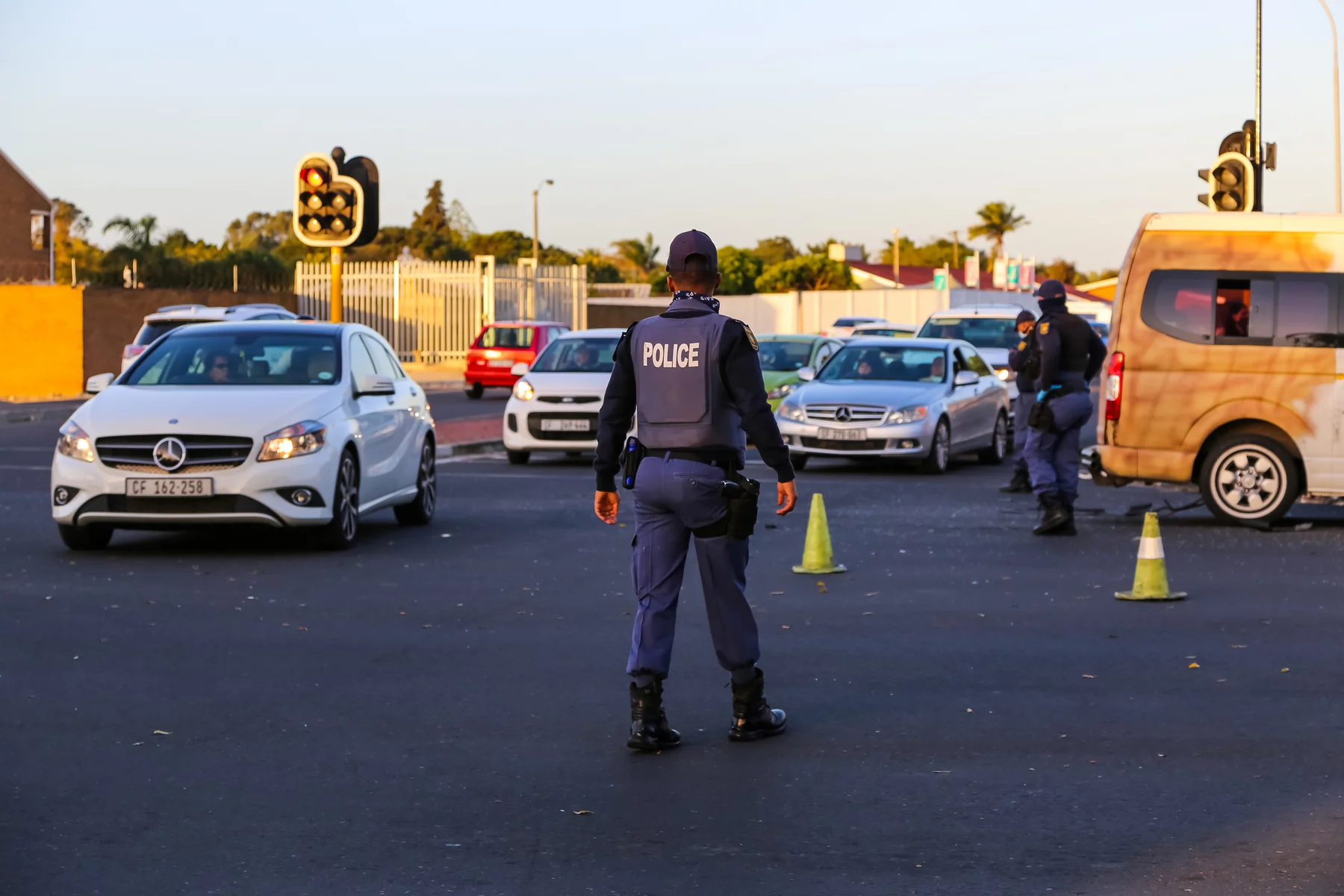
Important traffic laws and driving regulations include:
- Overtaking – the general advice is to keep left, and pass right, provided it’s safe. On highways, overtaking can occur in any lane unless a traffic sign or road marking prohibits this.
- Roundabouts – also called traffic circles; traffic entering from the right has priority
- Four-way stops – the first vehicle to arrive has the right of way
- Seatbelts – are mandatory; children under the age of three must be constrained in a car seat that is appropriate for their age and weight
- Mobile phones – it is illegal to hold and use a mobile phone while driving
- Traffic lights – when turning at traffic lights (also called robots in South Africa), priority is given to oncoming traffic, even when the light is green. The amber light means slow down to stop.
- Driver’s license – always carry this with you when driving
- Pedestrians – have the right of way at pedestrian crossings or intersections. Jaywalking across freeways is illegal but common practice. So, stay vigilant, especially at night.
- Cyclists – keep a distance of 1.5 meters between your car and cyclists
The speed limit in South Africa
Road signs indicate the speed limit for a specific road, but generally:
- Urban areas – 60km/h
- Rural roads – 100km/h
- Freeways, highways, and main roads – 120km/h
Penalties for minor traffic offenses in South Africa
There are two types of speeding fines in South Africa:
- A Section 341 traffic ticket – this is posted to you after the camera has captured you speeding. You have 30 days to pay, with an extra 30 days’ grace.
- A Section 56 notice – this is given on the spot by a traffic officer if you are caught speeding. Your ticket will show a court date, with a payment deadline that is typically two weeks before the court date.
Penalties vary from R250 (11–15km/h over the limit) to a court summons (30–40km/h over the limit, depending on location). There are various ways to pay fines. You can do so at the related traffic department, a post office, or via internet banking. You can also pay fines online via payCity. However, if you were speeding in a remote area, you should look at the payment details printed on the ticket. To contest or reduce your fine, you can appeal in writing to the relevant municipal traffic department.
Notably, the state is introducing a demerit system. According to the Administrative Adjudication of Road Traffic Offences (AARTO) system, drivers start with zero demerit points and traffic infringements will incur demerit points in addition to fines. At the 15-point threshold, drivers could have their license suspended.
Driving under the influence in South Africa
It is illegal to drive under the influence of alcohol or narcotic drugs. You are driving under the influence (DUI) if your blood alcohol content is over 0.05g per 100ml. That is equivalent to a glass of wine, a beer (over 350ml), or a single spirit shot. The legal breath alcohol level is less than 0.24mg per 1,000ml of breath. A stricter, zero-tolerance approach is being discussed.
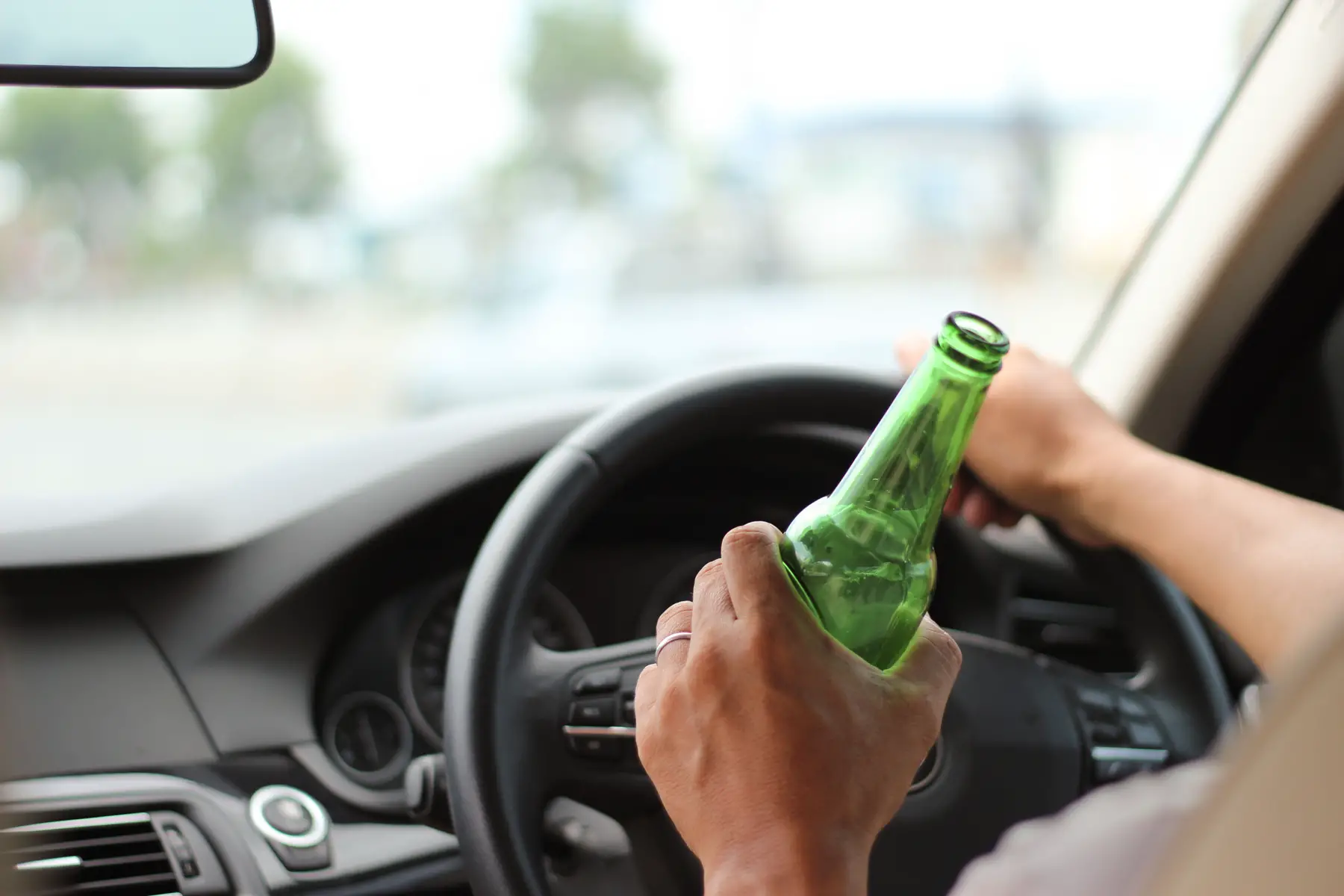
The government is continually making efforts to stop intoxicated driving. For instance, roadblocks are common, especially during the weekends. If you are caught driving under the influence, you could be arrested and detained. The fine ranges between R2,000 and R120,000, or you could face a prison sentence of two to six years. Your license could also be suspended or revoked.
Drug testing is less common, but lobbyists are hoping for stricter laws on driving under the influence of substances other than alcohol.
Distracted driving laws in South Africa
You are not allowed to use a hand-held communication device in South Africa, even when waiting at a traffic light. In other words, if the engine is running, you can’t hold a phone. You must secure your phone with a hands-free kit; otherwise, you could receive a fine of more than R500 and have your phone confiscated. Penalties differ across the provinces.
Driving without a license in South Africa
Under the AARTO demerit system, driving without a license could cost you up to R1,250 and a penalty of four demerit points.
Road signs in South Africa
Road signs fall under four main categories: regulatory signs, warning signs, guidance signs, and temporary regulatory signs. You can visit the Arrive Alive website or read the Department of Transport (DoT) manual to see examples of these signs.

Of course, given the abundance of wildlife in South Africa, it’s not uncommon to see signs depicting animals – such as baboons, penguins, antelope, and cattle – that may cross the road in the area.
Traffic information in South Africa
Numbeo users ranked South Africa 13th out of 87 countries, with a traffic index of 190.94. This is better than India (9th) but much worse than the United States (32) and Austria (87). The index refers to the average commute time to work and associated dissatisfaction when it takes too long. It also includes perceived inefficiencies of the traffic system and estimation of carbon dioxide consumption. Research from the TomTom Traffic Index ranking, which analyses urban congestion in 404 cities across 58 countries, lists East London, Cape Town, Johannesburg, and Pretoria as the most congested cities in the country.
Given Cape Town’s mountainous landscape, commuters entering the city center from the outlying suburbs may experience traffic jams. In Gauteng, the highway between Pretoria and Johannesburg gets congested during the traffic peak hours, around 7:00 and between 15:00 and 18:00. Naturally, traffic along the country’s major routes also increases during religious and school holidays.
Conveniently, radio stations feature regular traffic reports. You can also find real-time traffic updates online via i-TRAFFIC, EWN, or The South African. Helpful traffic apps such as TrafficSA and Waze are also worth downloading.
Parking in South Africa
The ParkUpp website can quickly direct you to the nearest parking in South African cities. Notably, on-street parking can be expensive, with officially appointed attendants requiring payment by card or cash. Therefore, it is often cheaper and more secure to find the nearest multi-story parking garage. Occasionally, you can still find coin meters, especially in rural towns.
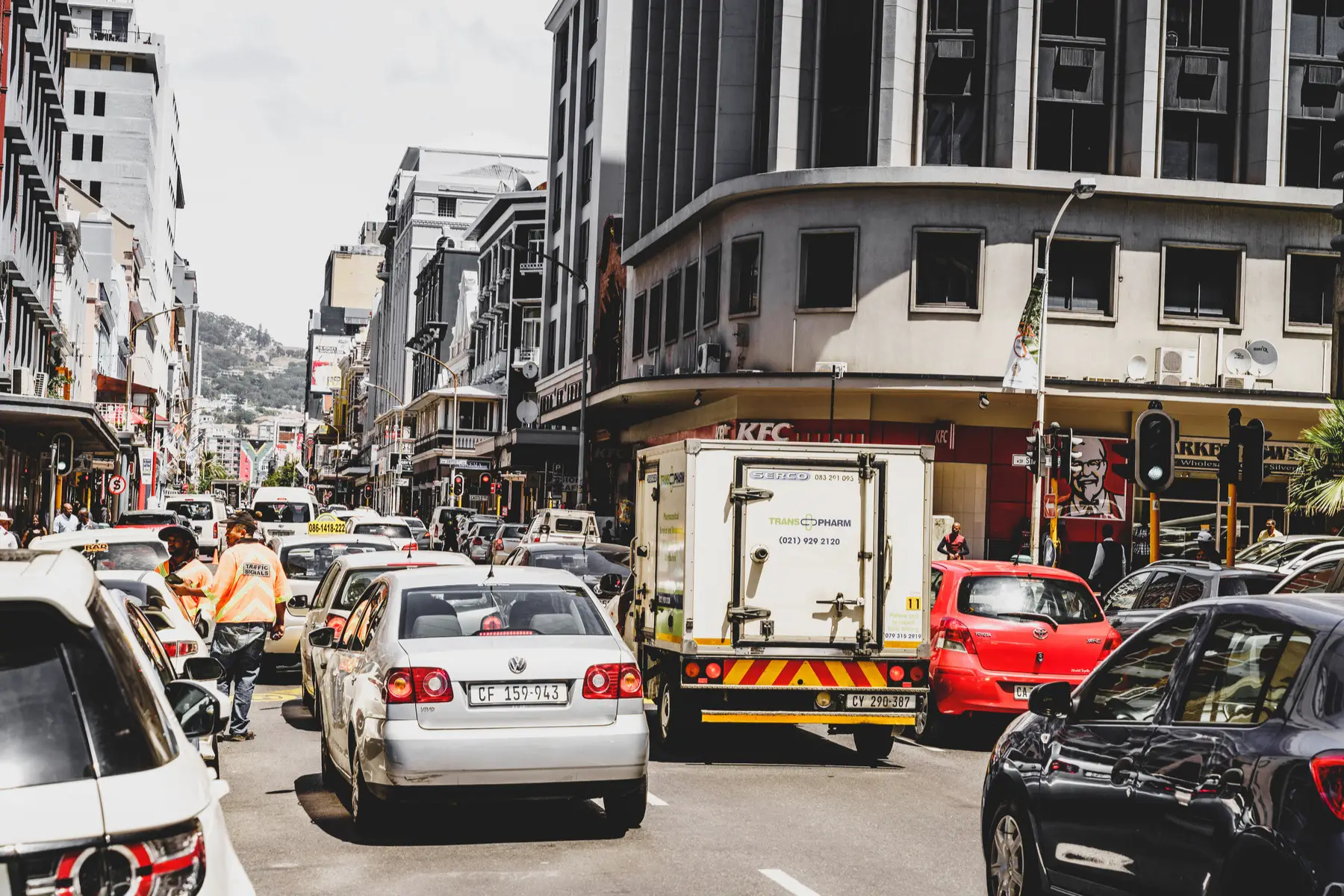
On-street parking is usually available in residential areas, provided you are not blocking an entrance or obscuring traffic signs. However, you can’t park on streets that are less than 5.5m wide. That said, the situation is different for residential complexes or gated communities. You must leave your car in designated guest parking after signing in at security. It is good to be aware that you may encounter car guards at shopping centers who will offer to watch your car for cash. However, they may not always be officially appointed.
Importantly, parking illegally in South Africa may incur fines that range from R250 to R500. These are typically in paper form and are stuck onto your car window. You can pay these at a post office, certain retailers, or online via payCity.
Road accidents and breakdowns
Road accidents in South Africa
According to the World Health Organization’s Global status report on road safety 2018, the average global number of road deaths is 18.2 per 100,000 people. In Europe, the figure is 4.9 deaths, and in Africa, it is as high as 26.6. Sadly, fatal accidents on South African roads are among the highest globally, averaging around 14,000 deaths annually.
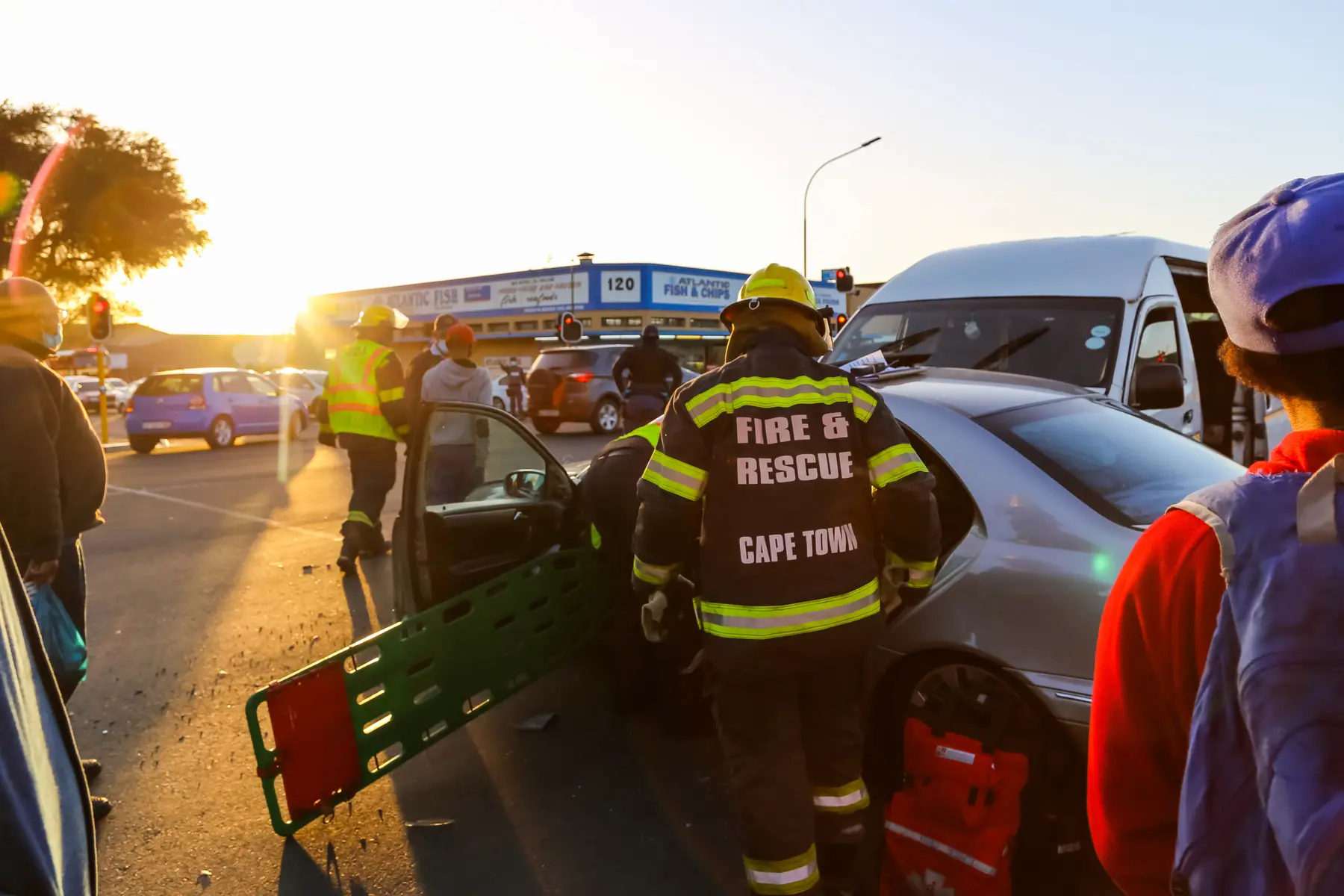
As a driver, if you have a car accident, the state could charge you with reckless or negligent driving or culpable homicide if someone is killed.
Here are some essential things to remember:
- Stop your car immediately and remain at the scene
- Ensure you, your passengers or any other people involved are safe
- If someone is hurt, call 112. The operator will dispatch the relevant emergency services. Follow their instructions.
- If you are a qualified first aider, you may need to assist anyone hurt, especially if they need CPR
- Stay at the scene until the emergency service or police permit you to leave
- Record essential details, such as weather and traffic flow, and take photos
- You might have to go for a medical exam; so avoid any narcotics, medications, or alcohol
- If the accident is minor, exchange details with witnesses or others involved for insurance purposes. Report the incident at the nearest police station, preferably within 24 hours.
- Remain calm, do not get into an argument that could escalate the situation, and do not admit guilt
- You might need an attorney to help you draft a written statement. Take note of any officer’s name and the case number. Ask for a copy of the police report.
- If you have been hurt, consult with a personal injury attorney
- Speak to your car insurer if you need to file a claim
Vehicle breakdowns in South Africa
Unfortunately, you can become the victim of an opportunistic crime if you are stranded by the roadside, particularly at night. Therefore, keep your car well-maintained to avoid breakdowns. Still, if it happens, there are a few things to keep in mind:
- Pull over to the emergency lane or left road shoulder. Switch on your hazard lights to ensure your car is visible.
- Lock your doors, stay in your car and call for professional help
- Don’t accept help from anyone who isn’t in uniform or can provide proper identification
It is wise to have roadside assistance available 24/7 by joining the Automobile Association (AA). Many car insurers also include this service.
Cars in South Africa
There are a few things to consider when it comes to buying, selling, importing, registering, or renting a car in South Africa.
Importing a car in South Africa
The state restricts the import of used vehicles. However, South African nationals returning home or expats with permanent residence may bring their cars into the country. You may also get special permits for racing, vintage, custom-designed, or inherited vehicles.
To import a car, you will need an import permit, a copy of the vehicle license document, and a letter of authority from the National Regulator for Compulsory Specifications (NRCS).
Buying a car in South Africa
Buying a car in South Africa can be a slow process, given the extra paperwork involved for foreigners. To start with, you must register with NaTIS (the national administration traffic information system) with a foreign identification document or a Traffic Register Number (TRN). A TRN is the identification number an international resident uses when buying, selling, or registering a vehicle in South Africa.
To obtain a TRN, you would need to submit an Application and Notice in Respect of Traffic Register Number (ANR), pay a fee, and supply the following documents at your nearest registering authority (RA) or Driving Licence Testing Centre (DLTC):
- Passport
- Driver’s license
- Visa showing your legal residency status
- Proof of address
- Black and white passport photos
The application can take up to six weeks to be approved.
You can visit a dealership to buy a new car. Of course, a new car is more expensive, but the advantage is that everything will be in working order, and the purchase will include a maintenance plan. This guarantees you a free annual service for several years.
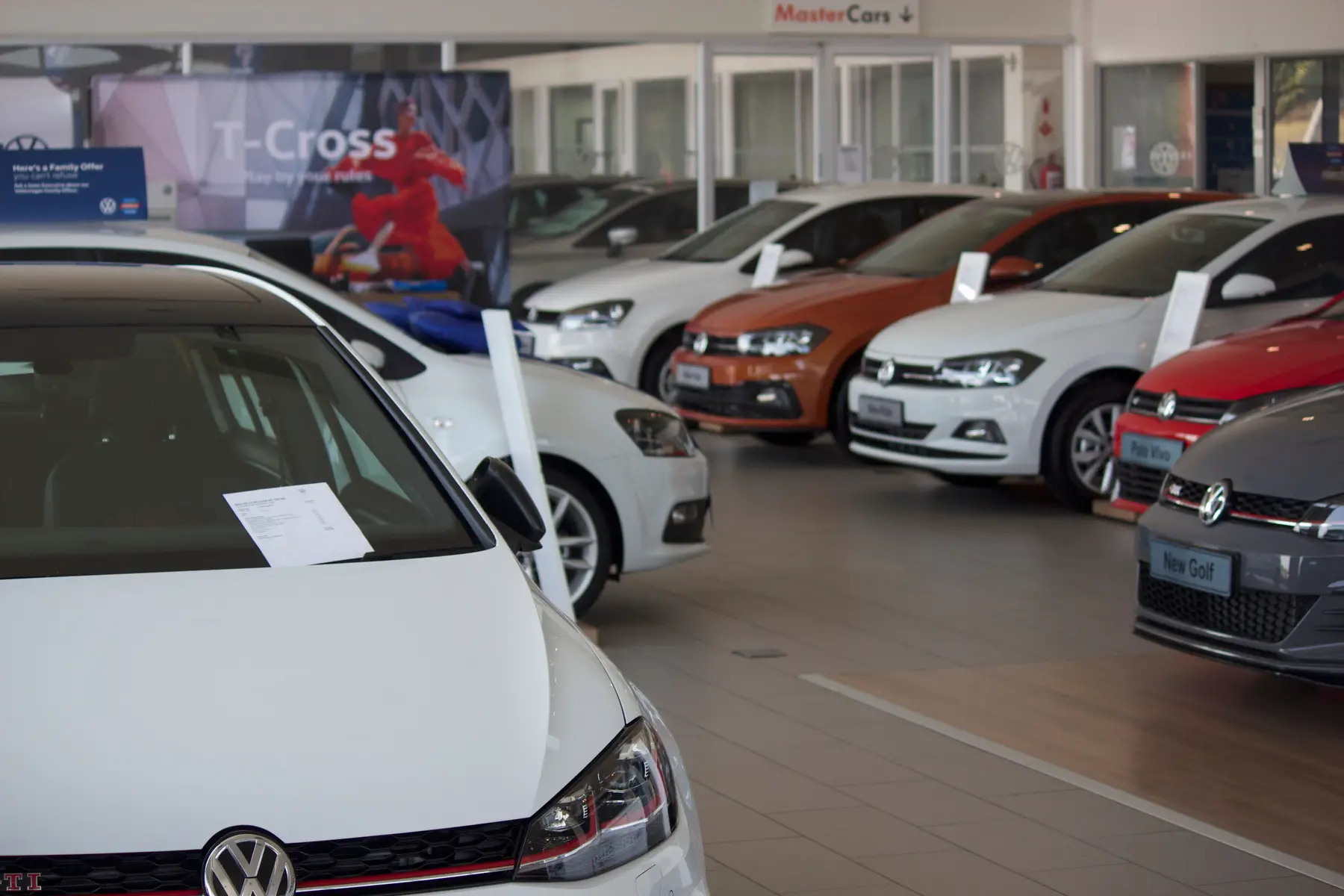
While buying a used car may be more affordable, it does come with risks. Therefore, make sure to only buy through a reputable used-car dealership or trusted online marketplace such as AutoTrader SA. Of course, it’s important to take it for a test drive, review its service record, and have it inspected professionally. However, if you have bought a defective vehicle from a used-car dealer, you can lodge a complaint with the Motor Industry Ombudsman of South Africa (MIOSA).
Hiring a car in South Africa
Renting a car in South Africa is relatively inexpensive compared to other countries. Car rental companies include local and internationally recognized agencies, such as Avis, Budget, Sixt, and Europcar. You can also choose from a wide range of vehicles. If you want to rent a 4×4 or SUV for an upcoming holiday, then make sure to book ahead as demand for these peaks around school holidays; especially in December and January.
You will need your driving license, passport, and credit card. Some car rental companies will also require an International Driving Permit (IDP) if your foreign license isn’t in English. You might also want to consider the different insurance options carefully. Notably, many people opt for comprehensive cover as many drivers in South Africa don’t have full insurance.
If you plan on driving the car outside of the country’s borders, you will need a letter of permission from the rental company. Of course, this may incur extra costs.
On average, daily rental rates are around R300 but vary according to the time of year and the type of vehicle. You can compare prices on sites such as Rentalcars.com and Drive South Africa.
Selling a car in South Africa
In South Africa, you can sell your car to a dealership or use pre-owned car sellers. Online marketplaces connecting sellers to approved dealers are also popular. You might want to try Auto Mart, Auto Trader SA, or We Buy Your Car. Alternatively, you can sell your car directly to an interested buyer. Nonetheless, be sure you have all the relevant documents readily available:
- Identification document
- Proof of ownership certificate
- A settlement letter (if you still owe money on the car)
- Notification of Change of Ownership (NCO)
- Vehicle Registration Certificate
- Proof of Sale
- Roadworthy Certificate (RWC)
- Service history and receipts
Once sold, the seller and buyer have 21 days to confirm the change of ownership with the appropriate registering authority (RA). This process involves a few steps and some paperwork.
The seller
- Must complete and submit these forms:
- Notice of Change of Ownership/Sale of Motor Vehicle (NCO)
- Notice of Change of Particulars (NCP)
- Supplies the buyer with the car registration certificate
The buyer
- Ensures the car is roadworthy
- Registers the vehicle in their name
- Completes and submits these forms:
- Application for Registration and Licensing of Motor Vehicle (RLV)
- Notice in Respect of Traffic Register Number (ANR)
- Submits the vehicle registration and Roadworthiness Certificate (RWC)
You can obtain all these forms from your nearest registering authority (RA) or download them from the NaTIS website.
Both the seller and buyer will also need to show:
- Proof of identification
- Temporary residence permit or work visa
- Proof of address
Fees vary between provinces, but all the RAs will process the application on the same day.
Carpooling and car sharing in South Africa
Rising fuel costs have led more South Africans to start carpooling or joining lift clubs in recent years. Some busy roads even have dedicated lanes for vehicles with more than three occupants to encourage car sharing.
Apps such as CarpoolWorld, CarTrip, and Jrney can help you find and advertise car sharing in your region. Some ride-hailing platforms, such as UberX Share, also allow passengers to share their rides. You can even search Gumtree for local carpooling requests.
Car repair in South Africa
If your new car requires repairs, then you should take it to one of the manufacturer’s authorized repair centers. Your car insurer may also require that you use one of their approved workshops. Alternatively, you might want to consider the AA’s list of approved technicians.
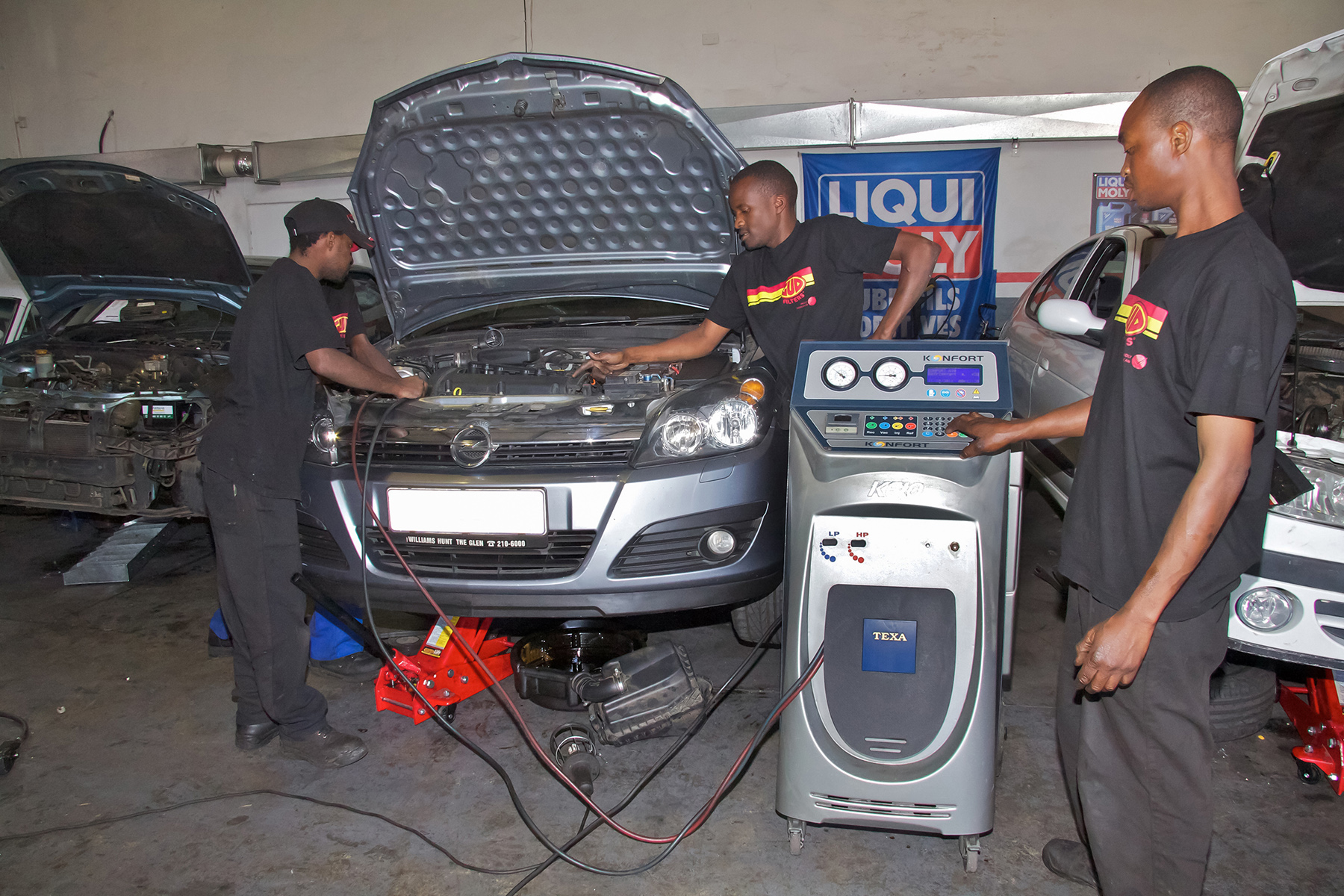
If you drive a second-hand car, you can also take it to a local mechanic. However, it is good to find one that is based on recommendations, which you can often find on expat forums. Of course, you could also browse the Yellow Pages but always read customer reviews on Hellopeter first.
Reputable auto-glass repair shops, such as Autoglass and Glasfit, can quickly repair cracked windscreens. Or, if you need tires replaced, you can go to HI-Q and Tiger Wheel & Tyre which have branches nationwide.
Tips on driving in South Africa
- Car theft – invest in a vehicle tracker or immobilizer and car alarm
- Breakdowns – sign up for nationwide roadside assistance 24/7
- Car-jacking – or hijacking, be vigilant at intersections, slipways, and intersections. Similarly, whenever leaving or arriving at home.
- Windows and doors – keep wound up and locked when driving
- Road trips – avoid stopping in remote areas; instead, go to petrol stations if you need directions or a break
- Hitchhikers – don’t pick them up
- Road obstacles – steer to avoid them, rather than stopping to remove them
- Valuables – don’t leave your bag or valuables in sight
- Planning – plan your routes to avoid accidentally driving into unsafe areas
- Road surfaces – watch out for potholes and animals crossing the road in rural areas and especially at night
Useful resources
- Gov.za – the South African Government website concerning driving
- Transport – South Africa’s Department of Transport website (DoT); see land transport services
- Arrive Alive – road safety information portal
- RTMC – the Road Traffic Management Corporation road safety agency
- NaTIS – the National Traffic Information System portal
- AA – the Automobile Association of South Africa
